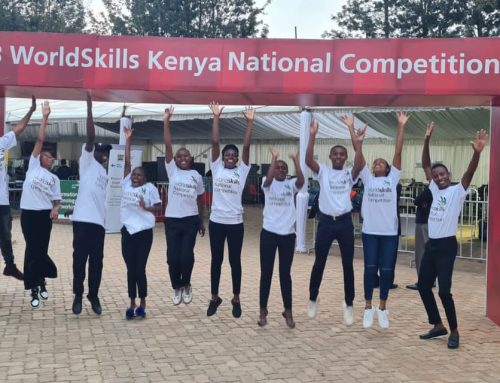By Dr Paul Wanyeki
In the last few years, the government has reformed and invested heavily to uplift the standards and promote inclusivity and accessibility to Technical and Vocational Education and Training (TVET) in the country.
This transformation of the TVET sector has been championed by H.E President Wiliam Ruto as an avenue to better standards of living by empowering youths with skills that attract decent jobs.
A well designed and implemented TVET system is supposed to provide the acquisition of practical skills and job-related behaviors relating to occupations in various sectors of economic and social life. The African Union emphasizes that in the knowledge society of the 21st Century, dominated by information and communication technology, and where labor market demands are constantly changing, providing relevant TVET programs to the both the adults and the youth is deemed central to the effort to foster sustainable development since it empowers individuals to become economically productive and thus escape poverty and marginalization.
In Kenya, for many decades, the number of female students enrolled in TVET courses were persistently low and sometimes declining especially in Science, Technology, Engineering and Mathematics (STEM).
Gender inequalities in TVET enrollment made it a focus of many researchers who proposed various interventions. Over the years, the Government, NGOs and the development partners have designed various interventions that has increased female enrollment in TVET and specifically STEM. The intervention included, legislation, affirmative actions, scholarships of women in STEM, provision of career advice to girls, establishment and strengthening of gender committees among other interventions.
The interventions have yielded positive results especially in boosting enrollment in science related courses and significant improvements witnessed in enrolment in women in manufacturing and engineering related courses. Despite, the significant increase in enrolment, women’s enrolment and participation in Technical and Vocational Education and Training (TVET) and specifically Technology, Engineering, and Mathematics remain low.
According to data from TVET Authority and the Directorate of Technical Education, as of October 2023, the total enrolment of women in mechanical engineering-related programs stood at 4,862 out of the total enrolment of 41,194 representing 11.8%. The same scenario was replicated in the electrical engineering and Building and civil engineering-related programs with women enrolment at 15.8% (8,163) and 22.7% (18,653) respectively.
Various factors affect enrolment of students in any field of study. In most cases before one decides to pursue a certain career, one may either be influenced by existing stereotypes about the course, the learning environment, successful cases in the community or role models, the nature of prospective work environment, and career guidance from either experts, peers or guardians.
For most of Technical and Engineering related programs, the learning environment remains masculine as most of the learning activities are yet to be regulated, automated or mechanized. The same is replicated in the work environment thus discouraging female students as muscles rather than knowledge and skill is required to execute tasks. Also, more than 80% of the labour market remain informal and unregulated thus lacking decent work opportunities. Because of these barriers, the technology and engineering sector has attracted gender stereotypes on capacity of female students to withstand the rigorous of technology and engineering studies and labour market related assignments. Further the sector does not have many role models to offer career guidance through real experiences.
On the contrary, data from TVET Authority indicates that targeted interventions have raised women’s enrolment in science-related programs. Women enrolment in various science-related programs has surpassed male enrolments. Cases on point, in health sciences women enrolment stood at 57% (4,571) while in Applied sciences the enrolment of women was at 69.5% (9,257). Also, more women than males were enrolled in agriculture and environmental studies (54.2%), Hospitality, Institutional Management, Fashion & Design (84.8%), Business Studies Department (73.6%), and Liberal Studies Department (79%).
Interestingly, in Computing and Informatics programs, enrolment of women is at 50% (18,343) which is the same as male enrolment. This is encouraging as it implies the interventions and affirmative actions that the government and non-state actors have been putting in place over time are yielding results. The results could also be interpreted to mean that gender stereotyping has been reduced significantly and the barriers that were blocking women from enrolling in science-related courses reduced to negligible levels.
Overall, TVET enrolment in TVET institutions under the Ministry of Education stood at 367,925 as of October 2023. Male trainees represented 54.6% (200,893) of the total enrolment while females were 45.4% (167032). From these statistics, interventions to promote women in TVET need to be sustained until a 50% overall women enrolment is achieved. Equally, courses with low male enrolment require more research to unravel the causes of declining enrolment and put in place targeted interventions to increase male enrolment in the affected programs.
The writer is Ag. Director Standards Development, Compliance and Enforcement
TVET Authority




